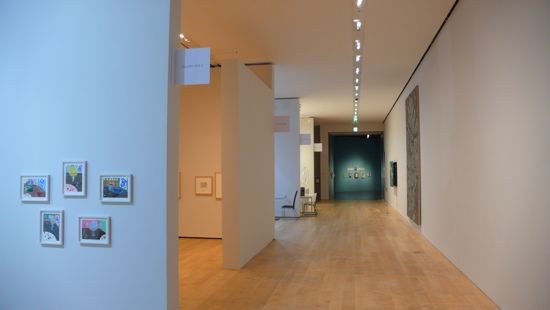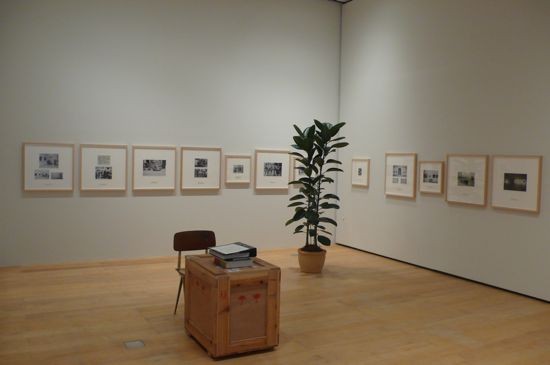
Installation view of G-Tokyo 2011 at Mori Arts Center Gallery with works by Peter McDonald on display in the booth of Gallery Side 2 in foreground. Photo ART iT.
Spun as a “boutique” art fair when it debuted in 2010, the inaugural edition of G-Tokyo was limited to only 15 participating local galleries and a three-day preview and exhibition period in an attempt to minimize the trade show atmosphere typical to commercial art events.
With the 2011 edition of G-Tokyo opening its vernissage Feb 18, the galleries organizing the fair have decided to minimally tweak that format. All 15 participants from 2010 are returning to the original venue at the Mori Arts Center Gallery, with no expansion in scale – a point that had been discussed after fair director Toshiko Ferrier took heat from galleries that were excluded from the contentious initial selection – and once again all participants must present exhibition-quality solo presentations or curated, thematic group shows. The lone innovation will be the introduction of an “exhibition week” from Feb 21-27 following the three-day sales period that is intended to provide visitors “a suitably relaxed atmosphere” to view the gallery presentations beyond “the intense initial period of acquisition,” while the fair has also teamed with the young galleries organization New Tokyo Contemporaries to produce a day-long salon Feb 19 in an effort to include emerging dealers.

Installation view of Mario Garcia Torres’ solo presentation “The Variable Dimensions of Art, 2010” on display in the booth of Taka Ishii Gallery at G-Tokyo 2011 in the Mori Arts Center Gallery. Photo ART iT.
Participants are putting on their best efforts. Solo presentations include Kishio Suga by Tomio Koyama, Alfredo Jaar by Kenji Taki, Wolfgang Tillmans by Wako Works of Art, Mario Garcia Torres by Taka Ishii and Kato Izumi by ArataniUrano. Curated presentations include “Portraits” by Gallery Koyanagi with works by artists ranging from Sophie Calle to Hiroshi Sugimoto and “Light Field” curated by artist Daisuke Ohba for SCAI the Bathhouse with works by artists including Anish Kapoor and Tatsuo Miyajima as well as those by Ohba himself. Whether collectors will respond to these presentations as “intensely” as anticipated in the fair press materials is another question. Sales in 2010 were relatively decent by the standards of Tokyo, where the contemporary art market has yet to reach international volume, even in a period of economic downturn. Ota Fine Arts registered sales of several works by blue-chip artist Yayoi Kusama, while Mizuma Art Gallery sold out its solo presentation of works by Akira Yamaguchi ranging from JPY 500,000 to 1 million, and Wako Works of Art found numerous buyers for Gerhard Richter’s small-scale “Overpainted Photographs” ranging from JPY 2.9 million to 3.6 million.
The fair will cap a frenetic week of art events in Tokyo that has already seen the launch of a new “concept” fair Tokyo Frontline on Feb 16 and the unveiling of the 3rd Yebisu International Festival for Art & Alternative Visions on Feb 17. Additionally, following G-Tokyo’s Feb 18 vernissage the participating galleries Ota Fine Arts, Wako Works of Art and Taka Ishii will be among those inaugurating a new art hub in Roppongi, the Piramide Building in the shadow of the Roppongi Hills lifestyle and office development that houses the Mori Arts Center.
G-tokyo opens to the public at the Mori Arts Center Gallery on Feb 18 and continues through Feb 27.
Related:
– New ‘Concept’ Fair Debuts in Tokyo
– Tokyo’s ‘Yebizo’ media arts festival unveils 3rd edition
– Piramide Building brings galleries back to Roppongi
